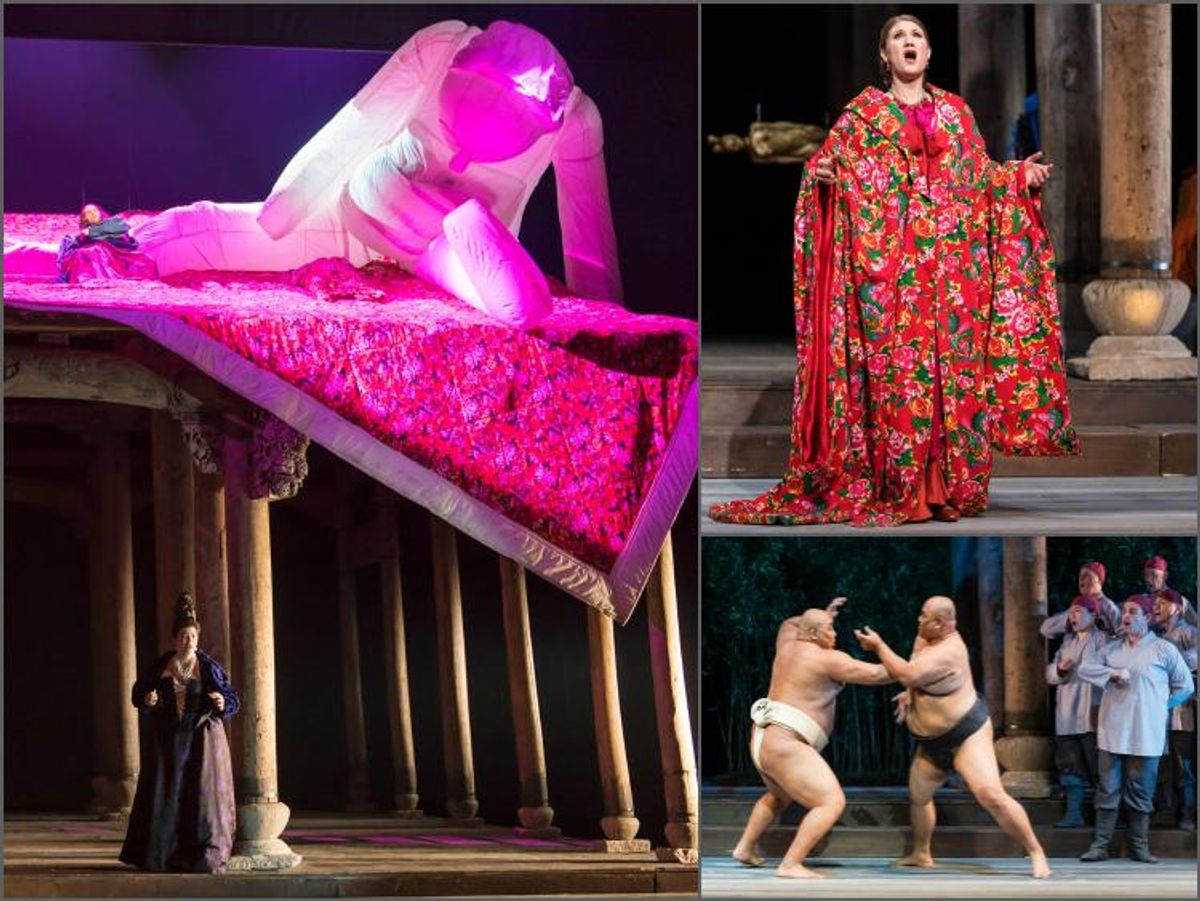When composer George Frideric Handel first introduced Semele, an oratorio inspired by the Greek myth of a mortal who falls in love with supreme god Jupiter, it was poorly received. Adultery and sexually-explicit arias weren't exactly the audience's cup of tea back in 1744, and the piece sunk into oblivion. Luckily, times have changed, and now a provocative work of art can be rediscovered, reinterpreted, and hailed as an act of bravery ahead of its time.
Semele's new staging, currently being produced at the Brooklyn Academy of Music, is sure to raise a few eyebrows -- and to command respect. In his first attempt at directing an opera, Chinese visual and performance artist Zhang Huan brushes away any form of classical convention. Huan had initially declined the offer to direct Semele ("the original opera was so foreign and distant to me", he writes in his director's note). The artist was in the process of acquiring a 450-year-old Ming Dynasty temple he had found in a Chinese province. In the excavation, Huan discovered the diary of a man who had been condemned to death for murdering his wife's lover. Huan saw a parallel between the man's story and the myth of Semele, and he merged the two tales to come up with a new vision of Handel's work.
The show begins with a short black-and-white documentary in which we see the temple being dismantled and reassembled in Huan's Shanghai studio. Then, the screen lifts up to reveal the monumental construction before the audience's gaping eyes.

The 17-ton temple, reconstructed on the stage of BAM for the occasion, serves both as sumptuous backdrop and centerpiece for the entire performance. In the opening act, Semele (played by the coloratura soprano Jane Archibald, whose virtuoso performance alone is worth the ticket price) is about to be married to Prince Athamas (countertenor Lawrence Zazzo, hilariously camp). Problem: Semele is in love with Jupiter, and has become his mistress. A thunder storm triggered by Jupiter postpones the wedding, but Jupiter's bitchy wife Juno (Hilary Summers, who also plays Ino, Semele's sister) discovers the affair, and wows to have her revenge.
This perilous love triangle serves as pretext for Huan's boundless imagination. He blends the story's origins in Greek and Roman mythology with Buddhist symbols, and references to Chinese and Japanese culture, creating a mish-mash of influences. Visually, it's a beautiful way to make Semele relevant in our globalized age, and the concept is also so irreverent that it makes the show incredibly entertaining.

Soprano Jane Archibald tears up the roof as Semele
During an off-stage sex scene between Semele and Jupiter, a pantomime donkey (played by two dancers in a costume) emerges on stage with a huge erection, while debaucherous monks, played by the chorus, take turns at having fun with him. In Buddhist imagery, the donkey represents the animal nature of sexual instinct. Shown here so crudely, it creates one of the show's many weird moments of slapstick humor that prompts uncontrollable laughter, breaking the holy barrier between audience and performers. Later, two sumo wrestlers appear out of nowhere and begin fighting, but the battle turns out to be anti-climatic (and rather funny) when the fighters clumsily make their way around the stage, taking long pauses to catch their breath.
The show, much like the score conducted by Christopher Moulds, gains in intensity as the story progresses. Some repetitious moments could have been edited out, but the final act is a gorgeous, gut-wrenching culmination of Semele's self-obsession and insatiable desire to ask for more than she already has, which meets a tragic outcome when she begs Jupiter to reveal himself to her in his godly form -- here, his divine spirit is seen as a gigantic dragon. The remarkable costumes, designed by Han Feng, become more minimal as the plot evolves, and Huan deliberately chose to omit Handel's original ending to close the curtain on a sour note.
After Semele's coffin is taken away by the chorus of monks (humming "The Internationale," a communist anthem), a woman wearing jeans and flip-flops takes the stage and begins to sweep the floor of the temple. It's perhaps the most compelling moment of the show, when all the passion and beauty eventually gives way to reality and darkness. For all the history and heritage carried in Semele, Huan shows that nothing ought to be taken too seriously; that love and life, like anything else, are fickle and ephemeral; and that nothing, not even a sumo wrestler or a century-old ancestral temple, is truly sacred.
Semele, through March 10 at Brooklyn Academy of Music, BAM.org



























































































